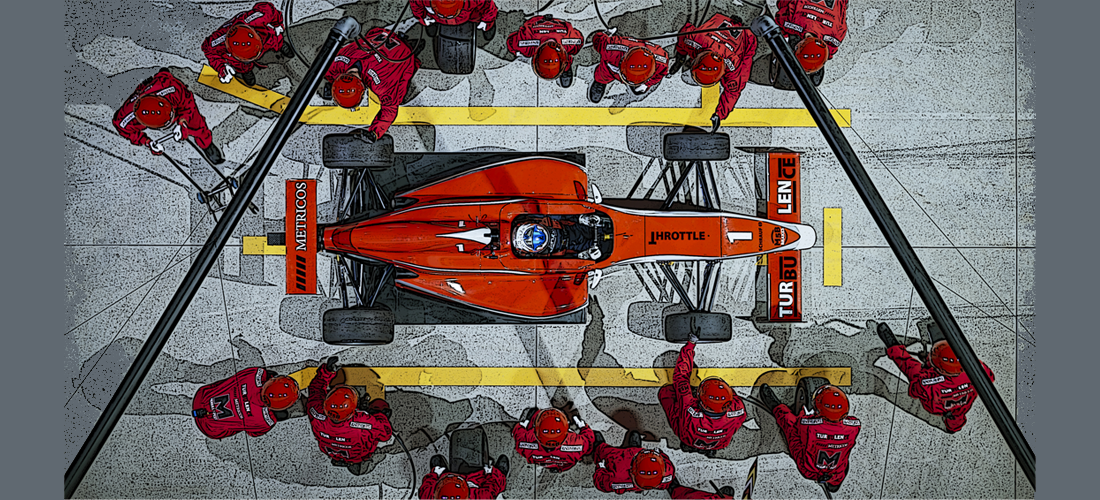In working with executive teams for the past 30 years, I am still amazed at how little team members know about each other, and at their low level of curiosity in uncovering the key drivers behind high-performance teams. Don’t get me wrong; these executives almost always are very talented men and women who are exceptional at what they do as individuals. It’s just when they come together as a team, something seems to be missing.
To help executives better understand the power of working as a cohesive unit, I often share this observation, which typically gets a chuckle: It is a modern marvel that 12 men and women, each with individual IQs of 160, can have a collective IQ of 22 as a team! And it is so very true. The reason is that each team member puts his or her piece ahead of the overall needs of the team and enterprise. We all know the adage, “The whole is greater than the sum of its parts,” and without a doubt, this statement rings true in the workplace. The issue is that many leaders struggle with identifying the right tactics to encourage everyone to put aside their egos and instead strive to be part of the whole.
Prioritizing the Whole
One of the biggest factors in creating a high-performance team is the belief, and more importantly, the behavior, that each member prioritizes the whole before their piece in decision-making, resource allocation, and dedication of their time.
The other driver of high-performance teams is creating a commitment between the team members that is a strong, unwavering, and deep human bond. Watch any championship game and the interview of the winners afterward.
While some of the MVPs may say they are going to Disneyland, the most important comment they almost always make is that they were driven to “not let my teammates down”! It is this tremendous human connection between people that is at the root of high-performing teams.
There are three very simple questions and actions that can help build powerfully strong, human-centered, high-performance teams.
Building Connected Teams
If you want to build connected teams that care deeply about the success of the whole more than (or at least as much as) they care about individual success, start by asking these three questions.
- What is your story?
Most of our clients have dinners during the multi-day strategy and culture sessions we facilitate. Several years ago, we started playing “Two Truths and a Lie” at these dinners. Members took turns sharing three short statements about themselves, and the rest of the team had to guess which one was the lie. Everyone on the team provided a guess about the non-truth. We kept track of each member’s success rate in guessing. It was often competitive, with the best guesser winning a bottle of wine or some other trophy.
However, the big aha was that people who had worked together for years knew so little about each other. It was stunning – just learning for the first time that the CFO was also a violinist, or the CMO was at one time in her life homeless, or the business general manager had a son with a terminal disease that he was beating. It changed the team. Forever.
As a result, we started encouraging our clients to try a simple process called “What’s your story?” This works for teams that are feeling disconnected, as well as ones that already feel connected, because every team can grow together more and strengthen itself as a cohesive unit. After all, you never know what you can learn about others if you don’t try.
It goes like this. Place a chair in the middle of the room. Then, over a period of weeks or months, and starting with the leader, each team member sits down and takes a turn telling their story. This process is transformative to the relationships between people on a team. It gives the storyteller an opportunity to share aspects of their life that might not have been discussed before. This can be instrumental in bonding a team, which can be instrumental in helping that team achieve success together. The typical comment is, “Based on what I now know about that person, I will never look at them the same again. I feel more connected to them in a way that goes even beyond the office!”
- What percentage of your capabilities are you currently contributing?
As leaders, we make assumptions about our teams all the time. One of those assumptions is that our team members are fully engaged and contributing all they have to offer every day. It is a dangerous assumption.
When we have encouraged leaders to ask each team member what percentage of their capabilities they are currently contributing, we find that leaders are shocked. The numbers often come back in the 60, 70, and 80% range – to the total surprise of the CEO, general manager, or team leader. The next question unlocks a great conversation, and it is, “What needs to happen for our team to receive all that you have to offer?” Taking the time to develop a concrete answer to this question, with specific tactics and actions, can transform an organization’s engagement levels.
- What does success look like to you?
It’s not easy to make a decision as a group. After all, a team is made up of individuals, each with their own opinions based on unique vantage points and biases. Throughout my career, I’ve observed that many decision roadblocks occur because the send button is stuck and the receive button is broken. That is, people debate and lobby for their preference for the team decision without hearing others. They are stuck in listening to respond mode rather than listening to understand. This is a fatal flaw that keeps many teams firmly positioned in the average performance swim lane.
But this roadblock isn’t permanent. It can be removed by simply asking each team member to describe what success would look like to them, and then listening carefully. The key is listening to understand. Gaining a true understanding of where others are coming from, and what their goals are, can lead to decisions far better than what can be achieved with a debate or vote.
Working Together is Best
High-performance teams are the result of people committing to build something together that is special, that doesn’t exist, and that they really care about bringing to life. These teams are working together and are excited to do so. When we keep the above questions top of mind and ask them on a regular basis, the result is a team of people who are deeply committed to their individual and collective success.






